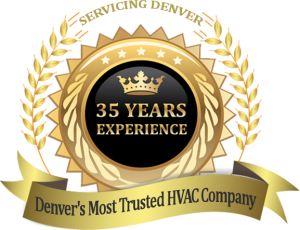Everything You Need to Know About Humidifiers in Your Home
 People who live in humid climates sometimes complain about the damp conditions. While it’s true that people who live in dry climates like Colorado have fewer issues with mold and dampness overall, dry climates present their own challenges. You can’t change the climate in your state, but you can change it in your home. Keep reading for everything you need to know about home humidifiers.
People who live in humid climates sometimes complain about the damp conditions. While it’s true that people who live in dry climates like Colorado have fewer issues with mold and dampness overall, dry climates present their own challenges. You can’t change the climate in your state, but you can change it in your home. Keep reading for everything you need to know about home humidifiers.
Health Detriments to Low-Humidity Environments
A low-humidity environment won’t necessarily cause you to be in ill health. However, it can exacerbate existing issues. For example, your allergies might hit you worse in a dry home. Humid air inhibits the passage of allergens, but they move freely in a dry environment. When the air is dry, you’ll also experience more coughing and sneezing.
Part of the reason you experience those symptoms is because the dry air dries out the mucous membranes in your respiratory passageways. Mucous serves a purpose — to maintain moisture in your airways and to prevent the passage of invaders like allergens and viruses. So, you may be more susceptible to illness in dry environments.
Dried out respiratory passages can lead to other issues as well. For instance, you may wake up with more chest congestion because the thickened mucous has settled while you sleep. You’re also more susceptible to nosebleeds because the insufficient moisture has left the skin dry and ready to crack. Indeed, you’ll see the same process on your hands and feet.
Household Detriments to Low-Humidity Environments
You’re not the only one who suffers in a low-humidity environment. Pets have skin and respiratory passages, too. With too-little humidity in the air, their skin can become dry. When they scratch, they can even cause a rash. They may also wheeze or sneeze because of the dry air. You might notice they drink a lot of water to compensate for their personal dryness.
Plants can also suffer in low-humidity situations. Certain plants require humidity to thrive. However, any plant can dry out in low-humidity environments. The air can dry out the soil before the water has a chance to pass through into their root systems. The dry air can also dry out their leaves. As a result, they might fail to thrive.
Other items in your home can also become damaged from dry conditions. For example, wood can become brittle in low-humidity homes because the dry air takes all the moisture out. You can also see more buildup of static electricity. Not only might you receive an unpleasant shock, but a big enough charge can take out a small electronic device.
Types of Whole-House Humidifiers
You can choose from several styles of portable humidifiers, such as an evaporator or steam vaporizer. However, these portable humidifiers are only suitable for adding moisture to a single room. For a house-wide lack of humidity, you need a whole-home humidifier. With those units, you have three types from which to choose.
A drum humidifier is the most budget-friendly. This system starts with a reservoir of water. A belt attached to a motor revolves the drum, which causes the water to evaporate. They can either rely on the blower motor of your furnace to disperse the moisture, or they can have their own fan. Drum humidifiers require more upkeep than other styles.
The flow-through humidifier is the mid-level option. Inside the unit is an evaporator pad that soaks up water fed into it. The unit connects to the hot air supply of the furnace via a takeoff duct. This duct diverts warm air into the unit to collect humidity from the pad before returning the air to the duct stream.
The steam humidifier is the most efficient model, and it’s also the high-end option. They run independently of your HVAC system, so you can humidify your home at any time. They feature their own reservoir of water and electric elements that heat up the water to make the steam. The blower fan then sends the humid air throughout your house.
Contact L&L Heating & Air Conditioning if you feel a whole-home humidifier will benefit your house.





Serving Front Range Denver from Arvada to Monument
Arvada
Aurora
Boulder
Brighton
Broomfield
Castle Pines
Castle Rock
Centennial
Cherry Hills Village
Commerce City
Denver
Edgewater
Elizabeth
Englewood
Evergreen
Foxfield
Franktown
Glendale
Golden
Greenwood Village
Highlands Ranch
Ken Caryl
Lafayette
Lakewood
Larkspur
Littleton
Lone Tree
Longmont
Louisville
Morrison
Northglenn
Parker
Roxborough Park
Sedalia
Sheridan
Thornton
Westminster
Wheat Ridge



